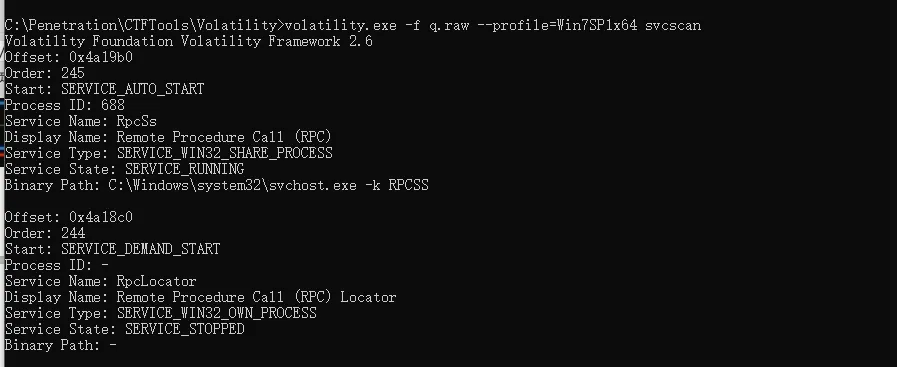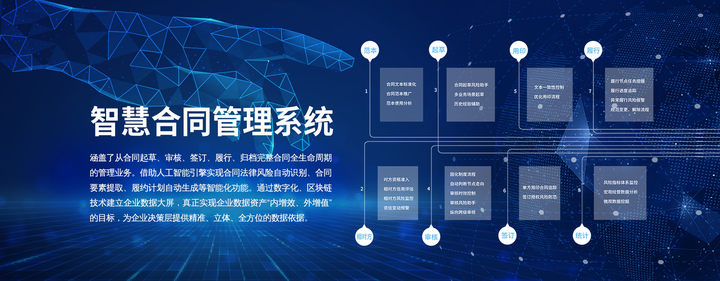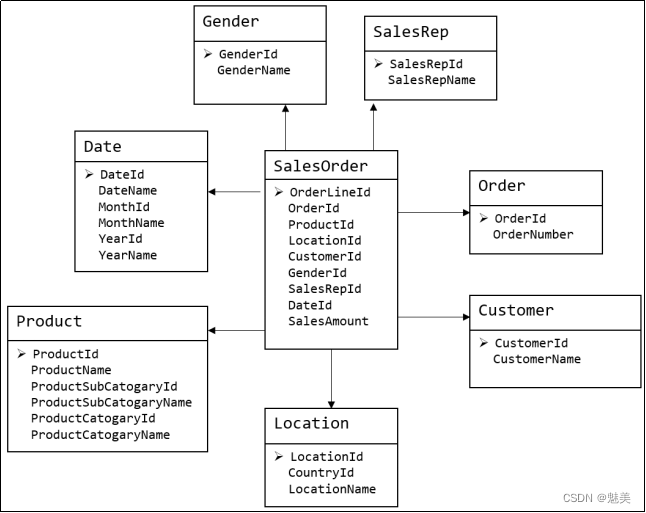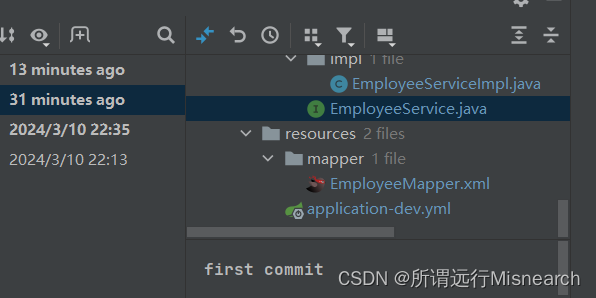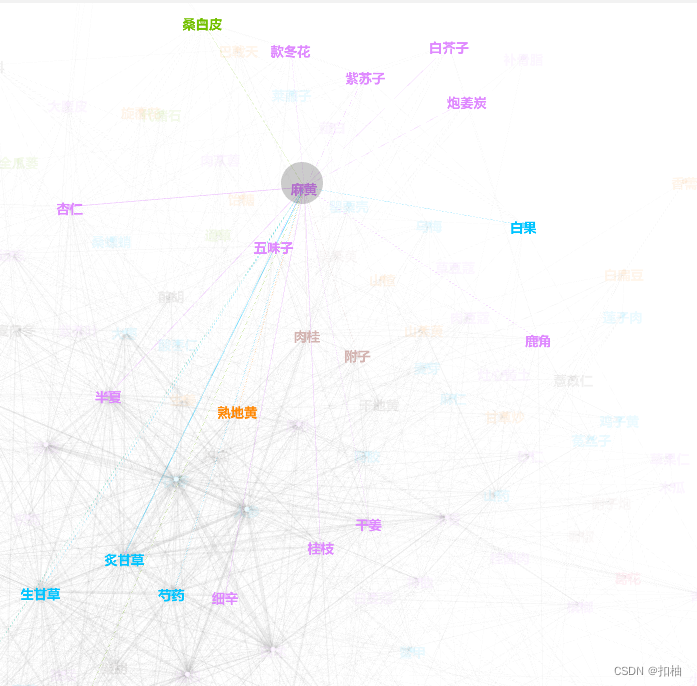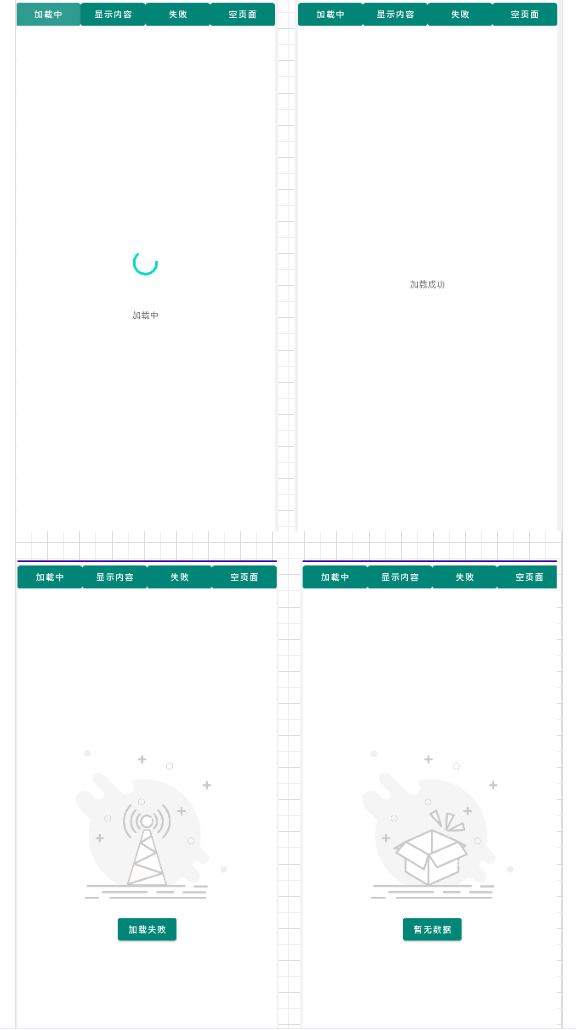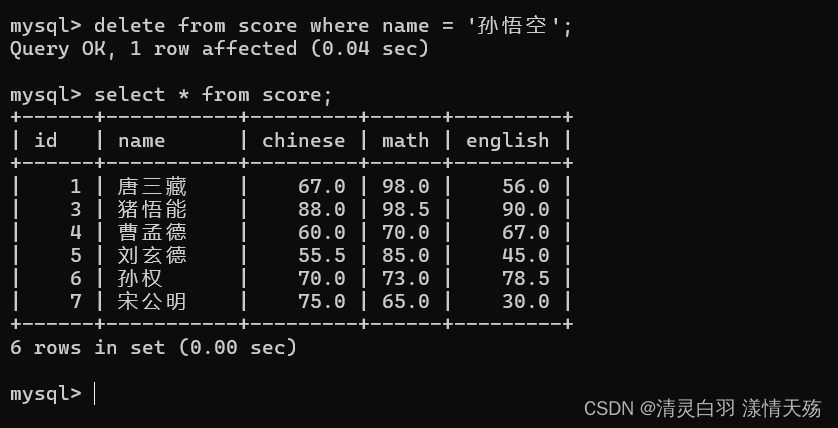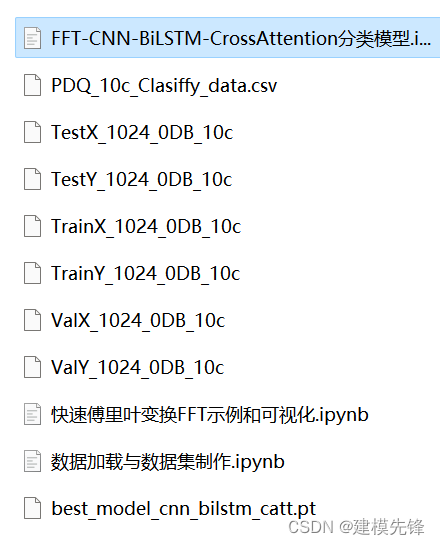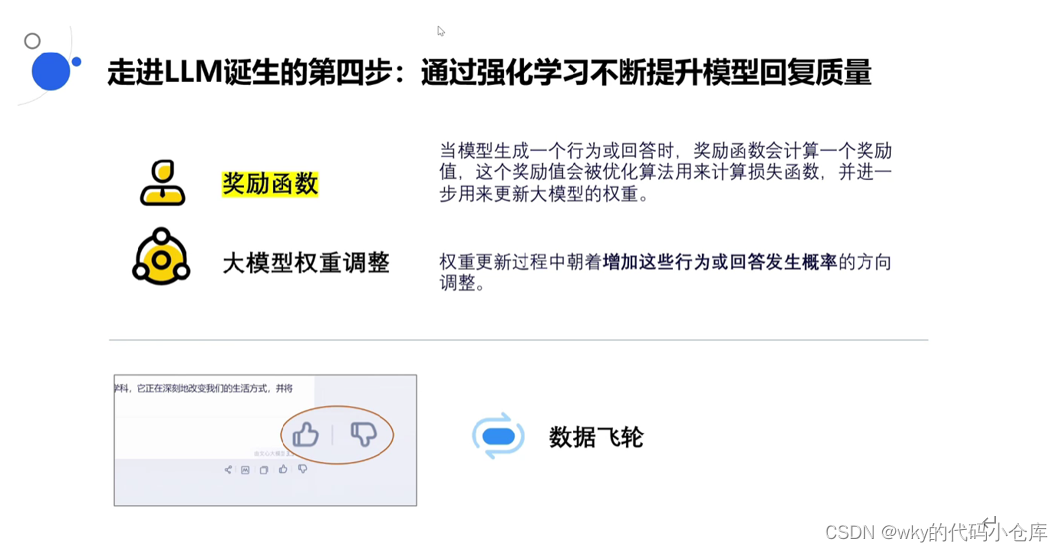目录
1.激动人心的消息
Grok-1 根据 Apache License 2.0 开放源代码
题外话-介绍JAX框架
2.grok-1模型参数介绍
3.推理grok-1模型需要多大显存?
4.grok-1开源意味着什么?
5.最后,让我们一同期待开源grok-1模型的训练代码!
"我们正在发布我们的大型语言模型 Grok-1 的基础模型权重和网络架构",xAI在一篇博客文章中宣布。“Grok-1”是一个由xAI从头开始训练的 3140 亿参数专家混合(Mixture-of-Experts)模型。
1.激动人心的消息
Grok-1 根据 Apache License 2.0 开放源代码
Grok-1 根据 Apache License 2.0 开放源代码,允许商业使用、修改和分发,但不能注册商标,用户也不承担任何责任或保证。此外,用户必须复制原始许可证和版权声明,并说明所做的修改。
目前,Grok-1 的代码和模型权重已经上线GitHub,收获37K+start。
github连接如下:grok-1

别太激动,xAI 强调,由于模型规模较大(314B参数),需要有足够GPU内存的机器才能使用示例代码测试模型。并且开源的模型是基于JAX框架去写的,并不是常用的pytorch、TensorFlow等框架。根据xAI官网消息,Grok-1是3140亿参数的混合专家模型,是迄今为止参数量最大的开源大语言模型,是Llama2开源大模型的4倍。并且尽管Grok-1已经开源。但是也些关键信息并没有透露。首先,xAI宣称他们是基于一套高效的基础设施进行训练的。这套高效的基础设施架构并未透露。
题外话-介绍JAX框架
JAX 是一个专为加速器优化的数组计算和程序转换设计的 Python 库,主要目标是高性能数值计算和大规模机器学习。它通过改进的 Autograd[12] 版本,能够自动计算 Python 和 NumPy 函数的导数,支持复杂结构的自动微分,包括循环、分支、递归和闭包,并能进行多阶导数计算
2.grok-1模型参数介绍
官网给出的grok-1模型参数简介
- Parameters: 314B
- Architecture: Mixture of 8 Experts (MoE)
- Experts Utilization: 2 experts used per token
- Layers: 64
- Attention Heads: 48 for queries, 8 for keys/values
- Embedding Size: 6,144
- Tokenization: SentencePiece tokenizer with 131,072 tokens
- Additional Features:
- Rotary embeddings (RoPE)
- Supports activation sharding and 8-bit quantization
- Maximum Sequence Length (context): 8,192 tokens
公开的model.py文件如下所示:
# Copyright 2024 X.AI Corp.
#
# Licensed under the Apache License, Version 2.0 (the "License");
# you may not use this file except in compliance with the License.
# You may obtain a copy of the License at
#
# http://www.apache.org/licenses/LICENSE-2.0
#
# Unless required by applicable law or agreed to in writing, software
# distributed under the License is distributed on an "AS IS" BASIS,
# WITHOUT WARRANTIES OR CONDITIONS OF ANY KIND, either express or implied.
# See the License for the specific language governing permissions and
# limitations under the License.
import functools
import logging
import re
from dataclasses import dataclass
from typing import Any, Callable, Dict, List, NamedTuple, Optional, Sequence, Tuple, Union
import haiku as hk
import jax
import jax.experimental.maps
import jax.numpy as jnp
from jax import config, tree_util
from jax.experimental.shard_map import shard_map
from jax.lax import with_sharding_constraint as pjit_sharding_constraint
from jax.sharding import PartitionSpec
from jax.sharding import PartitionSpec as P
config.update("jax_spmd_mode", "allow_all")
logger = logging.getLogger(__name__)
rank_logger = logging.getLogger("rank")
@dataclass
class QuantizedWeight8bit:
weight: jnp.array
scales: jnp.array
@property
def shape(self):
return self.weight.shape
tree_util.register_pytree_node(
QuantizedWeight8bit,
lambda qw: ([qw.weight, qw.scales], ()),
lambda _, children: QuantizedWeight8bit(children[0], children[1]),
)
class TrainingState(NamedTuple):
"""Container for the training state."""
params: hk.Params
def _match(qs, ks):
"""Return True if regexes in qs match any window of strings in tuple ks."""
# compile regexes and force complete match
qts = tuple(map(lambda x: re.compile(x + "$"), qs))
for i in range(len(ks) - len(qs) + 1):
matches = [x.match(y) for x, y in zip(qts, ks[i:])]
if matches and all(matches):
return True
return False
def with_sharding_constraint(x, constraint):
if jax.experimental.maps.thread_resources.env.physical_mesh.empty:
return x
else:
return pjit_sharding_constraint(x, constraint)
def cast_bfloat16(x):
if x.dtype.kind == "f":
return x.astype(jnp.bfloat16)
else:
return x
def ffn_size(emb_size, widening_factor):
_ffn_size = int(widening_factor * emb_size) * 2 // 3
_ffn_size = _ffn_size + (8 - _ffn_size) % 8 # ensure it's a multiple of 8
logger.debug(f"emd_size: {emb_size} adjusted ffn_size: {_ffn_size}")
return _ffn_size
def apply_rules(rules):
def _apply_rules(path, value):
del value # Unused.
path_list = [str(i.key).split("/") for i in path if isinstance(i, jax.tree_util.DictKey)]
flattened_path = jax.tree_util.tree_flatten(path_list)[0]
for rule, replacement in rules:
if _match(rule, flattened_path):
if isinstance(replacement, PartitionSpec):
if "layer_stack" in flattened_path:
replacement = PartitionSpec(None, *replacement)
rank_logger.debug(f"Apply {replacement} to {flattened_path} with rule {rule}")
return replacement
rank_logger.info(f"{flattened_path} no matching found!")
return None
return _apply_rules
TRANSFORMER_PARTITION_RULES = [
# attention
(("multi_head_attention", "(query|key|value)", "w"), P("data", "model")),
(("multi_head_attention", "(query|key|value)", "b"), P(None)),
(("multi_head_attention", "linear", "w"), P("model", "data")),
(("multi_head_attention", "linear", "b"), P(None)),
# mlp
((r"decoder_layer_[0-9]+", "linear", "w"), P("data", "model")),
((r"decoder_layer_[0-9]+", "linear", "b"), P(None)),
((r"decoder_layer_[0-9]+", "linear_v", "w"), P("data", "model")),
((r"decoder_layer_[0-9]+", "linear_v", "b"), P(None)),
(
(r"decoder_layer_[0-9]+", "linear_1", "w"),
P(
"model",
"data",
),
),
((r"decoder_layer_[0-9]+", "linear_1", "b"), P(None)),
# layer norms
((r"decoder_layer_[0-9]+", "layer_norm", "offset"), P(None)),
((r"decoder_layer_[0-9]+", "layer_norm", "scale"), P(None)),
((r"decoder_layer_[0-9]+", "layer_norm_1", "offset"), P(None)),
((r"decoder_layer_[0-9]+", "layer_norm_1", "scale"), P(None)),
# rms norms
((r"decoder_layer_[0-9]+", "rms_norm", "scale"), P(None)),
((r"decoder_layer_[0-9]+", "rms_norm_1", "scale"), P(None)),
((r"decoder_layer_[0-9]+", "rms_norm_2", "scale"), P(None)),
((r"decoder_layer_[0-9]+", "rms_norm_3", "scale"), P(None)),
# router
(("router", "w"), P("data")),
# moe mlp
(("moe", "linear", "w"), P(None, "data", "model")),
(("moe", "linear", "b"), P(None)),
(("moe", "linear_v", "w"), P(None, "data", "model")),
(("moe", "linear_v", "b"), P(None)),
(("moe", "linear_1", "w"), P(None, "model", "data")),
(("moe", "linear_1", "b"), P(None)),
# layer norms
(("moe", "layer_norm", "offset"), P(None)),
(("moe", "layer_norm", "scale"), P(None)),
(("moe", "layer_norm_1", "offset"), P(None)),
(("moe", "layer_norm_1", "scale"), P(None)),
# rms norms
(("moe", "rms_norm", "scale"), P(None)),
(("moe", "rms_norm_1", "scale"), P(None)),
(("moe", "rms_norm_2", "scale"), P(None)),
(("moe", "rms_norm_3", "scale"), P(None)),
]
LM_PARTITION_RULES = [
# Embedding layer.
(
("language_model", "positional_embeddings"),
P(None, ("data", "model")),
),
(
("language_model", "in_out_embed", "embeddings"),
P(None, ("data", "model")),
),
# Final RMSNorm.
(("language_model", "rms_norm"), P(None)),
]
TOP_K = 8
class KVMemory(NamedTuple):
k: Optional[jax.Array]
v: Optional[jax.Array]
step: Optional[jax.Array]
def init_layer_memories(
batch_size: int,
sequence_len: int,
num_kv_heads: int,
key_size: int,
num_layers: int,
step: Optional[jax.Array] = None,
dtype=jnp.bfloat16,
):
return [
KVMemory(
k=jnp.zeros((batch_size, sequence_len, num_kv_heads, key_size), dtype=dtype),
v=jnp.zeros((batch_size, sequence_len, num_kv_heads, key_size), dtype=dtype),
step=step,
)
for _ in range(num_layers)
]
class Memory(NamedTuple):
# Self-attention key/value cache.
layers: List[KVMemory]
class Router(hk.Module):
def __init__(
self,
num_selected_experts: int,
data_axis: Union[str, Tuple[str, ...]] = "data",
model_axis: Union[str, Tuple[str, ...]] = "model",
shard_activations: bool = False,
mesh: Any = None,
name: str = "router",
):
super().__init__(name)
self.shard_activations = shard_activations
self.data_axis = data_axis
self.model_axis = model_axis
self.mesh = mesh
self.num_selected_experts = num_selected_experts
def compute_routing_prob(
self, inputs: jax.Array, padding_mask: Optional[jax.Array], num_experts: int
):
return self._compute_routing_prob(inputs, padding_mask, num_experts)
@hk.transparent
def _compute_routing_prob(
self,
inputs: jax.Array,
padding_mask: Optional[jax.Array],
num_experts: int,
):
# Using fp32 for the routing prob computation.
inputs = jax.lax.convert_element_type(inputs, jnp.float32)
# [batch_size, seq_len, num_experts]
routing_logits = self._router_weights(inputs, num_experts, sharding=P("data"))
assert routing_logits.dtype == jnp.float32
routing_probs = jax.nn.softmax(routing_logits)
if padding_mask is not None:
routing_probs *= padding_mask
return routing_probs, routing_logits, 0
@hk.transparent
def _router_weights(
self,
x: jax.Array,
num_experts: int,
sharding: Optional[P] = None,
):
fprop_dtype = x.dtype
if not x.shape:
raise ValueError("Input must not be scalar.")
input_size = self.input_size = x.shape[-1]
w = hk.get_parameter(
"w", [input_size, num_experts], jnp.float32, init=hk.initializers.Constant(0)
)
if sharding:
w = with_sharding_constraint(w, sharding)
out = jnp.dot(x, w.astype(fprop_dtype))
return out
class MoELayer(hk.Module):
def __init__(
self,
num_experts: int,
layer_fn: Callable,
router: Router,
mesh: Any = None,
shard_activations: bool = False,
data_axis: Union[str, Tuple[str, ...]] = "data",
model_axis: Union[str, Tuple[str, ...]] = "model",
name: Optional[str] = "moe",
):
super().__init__(name)
self.num_experts = num_experts
self.layer_fn = layer_fn
self.router = router
self.mesh = mesh
self.shard_activations = shard_activations
self.data_axis = data_axis
self.model_axis = model_axis
@hk.transparent
def _inference_call(self, inputs: jax.Array, padding_mask: Optional[jax.Array] = None):
routing_probs, _, _ = self.router.compute_routing_prob(
inputs, padding_mask, self.num_experts
)
expert_gate, expert_index = jax.lax.top_k(routing_probs, k=self.router.num_selected_experts)
tmp = jnp.reshape(inputs, (inputs.shape[0] * inputs.shape[1], inputs.shape[2]))
broad_inputs = jnp.tile(tmp[:, jnp.newaxis, :], (1, self.router.num_selected_experts, 1))
broad_inputs = jnp.reshape(
broad_inputs, (broad_inputs.shape[0] * broad_inputs.shape[1], broad_inputs.shape[2])
)
init_fn, _ = hk.transform(self.layer_fn)
vmapped_init_fn = jax.vmap(init_fn, in_axes=0, out_axes=0)
lifted_init_fn = hk.experimental.transparent_lift(vmapped_init_fn)
# Fetch the vmapped params of the DenseBlock.
params = lifted_init_fn(
jax.random.split(jax.random.PRNGKey(1), self.num_experts),
jnp.zeros((self.num_experts, 1, 1, inputs.shape[-1])),
)
# Index and prob are in the shape [m, 2] indicating which token assigned to which experts.
# b: num_expert
# m: token or sequence dim
# k: input embed dim
# n: output embed dim
# e: the number of experts chosen for each token
@functools.partial(
shard_map,
mesh=self.mesh,
in_specs=(
P(self.data_axis, None),
P(None, None, self.model_axis),
P(None, None, self.model_axis),
P(None),
P(None),
),
out_specs=P(self.data_axis, self.model_axis),
check_rep=False,
)
def moe_slow_matmul1(input, weight, scales, index, prob):
weight = weight * scales
one_hot_indices = jax.nn.one_hot(index.reshape(-1), 8, axis=0)
all_expert_output = jnp.einsum("mk,bkn->bmn", input, weight)
output = jnp.einsum("bm,bmn->mn", one_hot_indices, all_expert_output)
return output
@functools.partial(
shard_map,
mesh=self.mesh,
in_specs=(
P(self.data_axis, self.model_axis),
P(None, self.model_axis, None),
P(None, self.model_axis, None),
P(None),
P(None),
),
out_specs=P(self.data_axis, None),
check_rep=False,
)
def moe_slow_matmul2(input, weight, scales, index, prob):
weight = weight * scales
one_hot_indices = jax.nn.one_hot(index.reshape(-1), 8, axis=0)
all_expert_output = jnp.einsum("mk,bkn->bmn", input, weight)
output = jnp.einsum("bm,bmn->mn", one_hot_indices, all_expert_output)
return jax.lax.psum(output, axis_name="model")
if hasattr(params["linear"]["w"], "scales"):
x = moe_slow_matmul1(
broad_inputs,
params["linear_v"]["w"].weight,
params["linear_v"]["w"].scales,
expert_index,
expert_gate,
)
y = moe_slow_matmul1(
broad_inputs,
params["linear"]["w"].weight,
params["linear"]["w"].scales,
expert_index,
expert_gate,
)
y = jax.nn.gelu(y)
out = moe_slow_matmul2(
x * y,
params["linear_1"]["w"].weight,
params["linear_1"]["w"].scales,
expert_index,
expert_gate,
)
out = jnp.reshape(
out,
[
inputs.shape[0],
inputs.shape[1],
self.router.num_selected_experts,
out.shape[-1],
],
)
out = expert_gate[:, :, :, None].astype(jnp.bfloat16) * out
out = jnp.sum(out, axis=2)
out = out.astype(jnp.bfloat16)
else:
# This is only here so that we can construct a valid init_fn with this code.
return inputs
return out
def __call__(self, inputs: jax.Array, padding_mask: jax.Array):
return self._inference_call(inputs)
class MHAOutput(NamedTuple):
"""Outputs of the multi-head attention operation."""
embeddings: jax.Array
memory: Any
class DecoderOutput(NamedTuple):
embeddings: jax.Array
memory: Any
class TransformerOutput(NamedTuple):
embeddings: jax.Array
memory: Any
@dataclass
class TransformerConfig:
emb_size: int
key_size: int
num_q_heads: int
num_kv_heads: int
num_layers: int
vocab_size: int = 128 * 1024
widening_factor: float = 4.0
attn_output_multiplier: float = 1.0
name: Optional[str] = None
num_experts: int = -1
capacity_factor: float = 1.0
num_selected_experts: int = 1
init_scale: float = 1.0
shard_activations: bool = False
# Used for activation sharding.
data_axis: Union[str, Tuple[str, ...]] = "data"
model_axis: Union[str, Tuple[str, ...]] = "model"
def __post_init__(self):
if isinstance(self.data_axis, list):
self.data_axis = tuple(self.data_axis)
if isinstance(self.model_axis, list):
self.model_axis = tuple(self.model_axis)
def partition_rules(self):
return TRANSFORMER_PARTITION_RULES
def make(self, mesh=None) -> "Transformer":
data_axis = tuple(self.data_axis) if isinstance(self.data_axis, list) else self.data_axis
model_axis = (
tuple(self.model_axis) if isinstance(self.model_axis, list) else self.model_axis
)
return Transformer(
num_q_heads=self.num_q_heads,
num_kv_heads=self.num_kv_heads,
widening_factor=self.widening_factor,
key_size=self.key_size,
init_scale=self.init_scale,
mesh=mesh,
attn_output_multiplier=self.attn_output_multiplier,
shard_activations=self.shard_activations,
num_layers=self.num_layers,
num_experts=self.num_experts,
num_selected_experts=self.num_selected_experts,
data_axis=data_axis,
model_axis=model_axis,
)
def get_memory_sharding(self):
return Memory(
layers=[
KVMemory(
k=P(self.data_axis, self.model_axis),
v=P(self.data_axis, self.model_axis),
step=P(self.data_axis),
)
for _ in range(self.num_layers)
],
)
def hk_rms_norm(
x: jax.Array,
fixed_scale=False,
sharding=P(None),
) -> jax.Array:
"""Applies a unique LayerNorm to x with default settings."""
ln = RMSNorm(axis=-1, create_scale=not fixed_scale, sharding=sharding)
return ln(x)
def make_attention_mask(
query_input: jax.Array,
key_input: jax.Array,
pairwise_fn: Callable[..., Any] = jnp.multiply,
dtype: Any = jnp.bfloat16,
):
"""Mask-making helper for attention weights.
In case of 1d inputs (i.e., `[batch..., len_q]`, `[batch..., len_kv]`, the
attention weights will be `[batch..., heads, len_q, len_kv]` and this
function will produce `[batch..., 1, len_q, len_kv]`.
Args:
query_input: a batched, flat input of query_length size
key_input: a batched, flat input of key_length size
pairwise_fn: broadcasting elementwise comparison function
dtype: mask return dtype
Returns:
A `[batch..., 1, len_q, len_kv]` shaped mask for 1d attention.
"""
mask = pairwise_fn(jnp.expand_dims(query_input, axis=-1), jnp.expand_dims(key_input, axis=-2))
mask = jnp.expand_dims(mask, axis=-3)
return mask.astype(dtype)
class Linear(hk.Linear):
def __init__(
self,
output_size: int,
with_bias: bool = True,
sharding: Optional[P] = None,
mesh: Any = None,
name: Optional[str] = None,
shard_axis: int = 0,
):
super().__init__(
output_size=output_size,
with_bias=with_bias,
name=name,
)
self.sharding = sharding
self.mesh = mesh
self.shard_axis = shard_axis
def __call__(
self,
inputs: jax.Array,
) -> jax.Array:
"""Computes a linear transform of the input."""
fprop_dtype = inputs.dtype
if not inputs.shape:
raise ValueError("Input must not be scalar.")
input_size = self.input_size = inputs.shape[-1]
output_size = self.output_size
w = hk.get_parameter(
"w", [input_size, output_size], jnp.float32, init=hk.initializers.Constant(0)
)
if hasattr(w, "scales"):
shape = inputs.shape
inputs = jnp.reshape(inputs, (-1, shape[-1]))
@functools.partial(
shard_map,
mesh=self.mesh,
in_specs=(self.sharding, self.sharding),
out_specs=self.sharding,
check_rep=False,
)
def mul(w, s):
return w.astype(s.dtype) * s
w = mul(w.weight, w.scales)
out = jnp.dot(inputs, w.astype(fprop_dtype))
if self.with_bias:
b = hk.get_parameter(
"b", [self.output_size], jnp.float32, init=hk.initializers.Constant(0)
)
b = jnp.broadcast_to(b, out.shape)
out = out + b.astype(fprop_dtype)
return out
class RMSNorm(hk.RMSNorm):
def __init__(
self,
axis: Union[int, Sequence[int], slice],
eps: float = 1e-5,
name: Optional[str] = None,
create_scale: bool = True,
sharding: Optional[P] = None,
):
super().__init__(axis, eps, create_scale=create_scale, name=name)
self.sharding = sharding
def __call__(self, inputs: jax.Array):
fprop_dtype = inputs.dtype
param_shape = (inputs.shape[-1],)
if self.create_scale:
scale = hk.get_parameter(
"scale",
param_shape,
dtype=jnp.float32,
init=hk.initializers.Constant(0),
)
if self.sharding:
scale = with_sharding_constraint(scale, self.sharding)
scale = jnp.broadcast_to(scale.astype(jnp.float32), inputs.shape)
else:
scale = 1.0
inputs = inputs.astype(jnp.float32)
scale = scale.astype(jnp.float32)
mean_squared = jnp.mean(jnp.square(inputs), axis=[-1], keepdims=True)
mean_squared = jnp.broadcast_to(mean_squared, inputs.shape)
normed_inputs = inputs * jax.lax.rsqrt(mean_squared + self.eps)
outputs = scale * normed_inputs
return outputs.astype(fprop_dtype)
def rotate_half(
x: jax.Array,
) -> jax.Array:
"""Obtain the rotated counterpart of each feature"""
x1, x2 = jnp.split(x, 2, axis=-1)
return jnp.concatenate((-x2, x1), axis=-1)
class RotaryEmbedding(hk.Module):
"""Applies rotary embeddings (RoPE) to the input sequence tensor,
as described in https://arxiv.org/abs/2104.09864.
Attributes:
dim (int): Dimensionality of the feature vectors
base_exponent (int): Base exponent to compute embeddings from
"""
def __init__(
self,
dim: int,
name: Optional[str] = None,
base_exponent: int = 10000,
):
super().__init__(name)
self.dim = dim
self.base_exponent = base_exponent
assert self.dim % 2 == 0
def __call__(
self,
x: jax.Array,
seq_dim: int,
offset: jax.Array,
const_position: Optional[int] = None,
t: Optional[jax.Array] = None,
) -> jax.Array:
fprop_dtype = x.dtype
# Compute the per-dimension frequencies
exponents = jnp.arange(0, self.dim, 2, dtype=jnp.float32)
inv_freq = jnp.asarray(
1.0 / (self.base_exponent ** (exponents / self.dim)), dtype=jnp.float32
)
if jnp.shape(offset) == ():
# Offset can be a scalar or one offset per batch element.
offset = jnp.expand_dims(offset, 0)
# Compute the per element phase (to pass into sin and cos)
if const_position:
t = const_position * jnp.ones(
(
1,
x.shape[seq_dim],
),
dtype=jnp.float32,
)
elif t is None:
t = jnp.arange(x.shape[seq_dim], dtype=jnp.float32) + jnp.expand_dims(offset, -1)
phase = jnp.einsum("bi,j->bij", t, inv_freq)
phase = jnp.tile(phase, reps=(1, 2))[:, :, None, :]
x = x * jnp.cos(phase) + rotate_half(x) * jnp.sin(phase)
x = x.astype(fprop_dtype)
return x
class MultiHeadAttention(hk.Module):
def __init__(
self,
num_q_heads: int,
num_kv_heads: int,
key_size: int,
*,
with_bias: bool = True,
value_size: Optional[int] = None,
model_size: Optional[int] = None,
attn_output_multiplier: 1.0,
data_axis: Union[str, Tuple[str, ...]] = "data",
model_axis: Union[str, Tuple[str, ...]] = "model",
name: Optional[str] = None,
):
super().__init__(name=name)
self.num_q_heads = num_q_heads
self.num_kv_heads = num_kv_heads
self.key_size = key_size
self.value_size = value_size or key_size
self.model_size = model_size or key_size * num_q_heads
self.data_axis = data_axis
self.model_axis = model_axis
self.attn_output_multiplier = attn_output_multiplier
self.with_bias = with_bias
def __call__(
self,
query: jax.Array,
key: Optional[jax.Array],
value: Optional[jax.Array],
mask: Optional[jax.Array] = None,
kv_memory: Optional[KVMemory] = None,
mesh: Any = None,
) -> MHAOutput:
# In shape hints below, we suppress the leading dims [...] for brevity.
# Hence e.g. [A, B] should be read in every case as [..., A, B].
sequence_length = query.shape[1]
projection = self._linear_projection
use_memory = False
if kv_memory is not None:
if kv_memory.k is None:
assert kv_memory.v is None
assert key is not None
assert value is not None
else:
assert kv_memory.v is not None
use_memory = True
else:
assert key is not None
assert value is not None
# Check that the keys and values have consistent batch size and sequence length.
if not use_memory:
assert key.shape[:2] == value.shape[:2], f"key/value shape: {key.shape}/{value.shape}"
if mask is not None:
assert mask.ndim == 4
assert mask.shape[0] in {
1,
query.shape[0],
}, f"mask/query shape: {mask.shape}/{query.shape}"
if not use_memory:
assert key.shape[0] in {
1,
query.shape[0],
}, f"key/query shape: {key.shape}/{query.shape}"
assert mask.shape[1] == 1
assert mask.shape[2] in {
1,
query.shape[1],
}, f"mask/query shape: {mask.shape}/{query.shape}"
if not use_memory:
assert mask.shape[3] in {
1,
key.shape[1],
}, f"mask/query shape: {mask.shape}/{key.shape}"
# Compute key/query/values (overload K/Q/V to denote the respective sizes).
assert self.num_q_heads % self.num_kv_heads == 0
query_heads = projection(
query,
self.key_size,
self.num_q_heads,
name="query",
sharding=P("data", "model"),
mesh=mesh,
) # [B, T', H, Q=K]
new_memory = None
key_heads = projection(
key,
self.key_size,
self.num_kv_heads,
name="key",
sharding=P("data", "model"),
mesh=mesh,
) # [B, T, H, K]
value_heads = projection(
value,
self.value_size,
self.num_kv_heads,
name="value",
sharding=P("data", "model"),
mesh=mesh,
) # [B, T, H, V]
rotate = RotaryEmbedding(dim=self.key_size, base_exponent=int(1e4))
key_heads = rotate(key_heads, seq_dim=1, offset=(kv_memory.step if kv_memory else 0))
query_heads = rotate(query_heads, seq_dim=1, offset=(kv_memory.step if kv_memory else 0))
@functools.partial(jax.vmap)
def update_into(mem, start, update):
return jax.lax.dynamic_update_slice_in_dim(mem, update, start, axis=0)
if kv_memory:
if mesh is not None:
@functools.partial(
shard_map,
mesh=mesh,
in_specs=(
P("data", None, "model"),
P("data"),
P("data", None, "model"),
),
out_specs=P("data", None, "model"),
check_rep=False,
)
def update_into_shmap(mems, starts, updates):
return update_into(mems, starts, updates)
key_heads = update_into_shmap(kv_memory.k, kv_memory.step, key_heads)
value_heads = update_into_shmap(kv_memory.v, kv_memory.step, value_heads)
else:
key_heads = update_into(kv_memory.k, kv_memory.step, key_heads)
value_heads = update_into(kv_memory.v, kv_memory.step, value_heads)
new_step = kv_memory.step + sequence_length
memory_mask = jnp.arange(kv_memory.k.shape[1]) < new_step[:, None]
memory_mask = memory_mask[:, None, None, :] # [B, H, T, T]
if mask is not None:
mask = memory_mask * mask
else:
mask = memory_mask
new_memory = KVMemory(
k=key_heads,
v=value_heads,
step=new_step,
)
# Add separate dimension for grouped query heads.
query_heads = with_sharding_constraint(query_heads, P(self.data_axis, None, "model", None))
key_heads = with_sharding_constraint(key_heads, P(self.data_axis, None, "model", None))
value_heads = with_sharding_constraint(value_heads, P(self.data_axis, None, "model", None))
b, t, h, d = query_heads.shape
_, _, kv_h, _ = key_heads.shape
assert h % kv_h == 0, f"query_heads {h} must be a multiple of kv_heads {kv_h}"
query_heads = jnp.reshape(query_heads, (b, t, kv_h, h // kv_h, d))
query_heads = with_sharding_constraint(
query_heads, P(self.data_axis, None, "model", None, None)
)
# Compute attention weights.
# Attention softmax is always carried out in fp32.
attn_logits = jnp.einsum("...thHd,...Thd->...hHtT", query_heads, key_heads).astype(
jnp.float32
)
attn_logits *= self.attn_output_multiplier
max_attn_val = jnp.array(30.0, dtype=attn_logits.dtype)
attn_logits = max_attn_val * jnp.tanh(attn_logits / max_attn_val)
mask = mask[:, :, None, :, :]
if mask is not None:
if mask.ndim != attn_logits.ndim:
raise ValueError(
f"Mask dimensionality {mask.ndim} must match logits dimensionality "
f"{attn_logits.ndim} for {mask.shape}/{attn_logits.shape}."
)
attn_logits = jnp.where(mask, attn_logits, -1e30)
attn_weights = jax.nn.softmax(attn_logits).astype(query.dtype) # [H, T', T]
# Weight the values by the attention and flatten the head vectors.
attn = jnp.einsum("...hHtT,...Thd->...thHd", attn_weights, value_heads)
attn = with_sharding_constraint(attn, P(self.data_axis, None, "model", None, None))
leading_dims = attn.shape[:2]
attn = jnp.reshape(attn, (*leading_dims, -1)) # [T', H*V]
attn = with_sharding_constraint(attn, P(self.data_axis, None, "model"))
# Apply another projection to get the final embeddings.
final_projection = Linear(
self.model_size,
with_bias=False,
sharding=P("model", "data"),
mesh=mesh,
)
return MHAOutput(final_projection(attn), new_memory)
@hk.transparent
def _linear_projection(
self,
x: jax.Array,
head_size: int,
num_heads: int,
sharding: Optional[P] = None,
name: Optional[str] = None,
mesh: Any = None,
) -> jax.Array:
y = Linear(
num_heads * head_size,
with_bias=False,
name=name,
sharding=sharding,
mesh=mesh,
)(x)
*leading_dims, _ = x.shape
return y.reshape((*leading_dims, num_heads, head_size))
@dataclass
class MHABlock(hk.Module):
"""A MHA Block"""
num_q_heads: int
num_kv_heads: int
key_size: int
attn_output_multiplier: float = 1.0
mesh: Any = None
data_axis: Union[str, Tuple[str, ...]] = "data"
model_axis: Union[str, Tuple[str, ...]] = "model"
@hk.transparent
def __call__(
self,
inputs: jax.Array, # [B, T, D]
mask: jax.Array, # [B, 1, T, T] or [B, 1, 1, T] or B[1, 1, 1, 1]
layer_memory: Optional[KVMemory],
) -> MHAOutput:
_, _, model_size = inputs.shape
assert mask.ndim == 4, f"shape: {mask.shape}"
assert mask.shape[2] in {1, inputs.shape[1]}, str(mask.shape)
assert mask.shape[3] in {1, inputs.shape[1]}, str(mask.shape)
side_input = inputs
def attn_block(query, key, value, mask, memory) -> MHAOutput:
return MultiHeadAttention(
num_q_heads=self.num_q_heads,
num_kv_heads=self.num_kv_heads,
key_size=self.key_size,
model_size=model_size,
data_axis=self.data_axis,
model_axis=self.model_axis,
attn_output_multiplier=self.attn_output_multiplier,
)(
query,
key,
value,
mask,
memory,
mesh=self.mesh,
)
attn_output = attn_block(inputs, side_input, side_input, mask, layer_memory)
h_attn = attn_output.embeddings
return attn_output._replace(embeddings=h_attn)
@dataclass
class DenseBlock(hk.Module):
num_q_heads: int
num_kv_heads: int
key_size: int
widening_factor: float = 4.0
sharding_constraint: bool = False
mesh: Any = None
@hk.transparent
def __call__(
self,
inputs: jax.Array, # [B, T, D]
) -> jax.Array: # [B, T, D]
_, _, model_size = inputs.shape
h_v = Linear(
ffn_size(
model_size,
self.widening_factor,
),
with_bias=False,
mesh=self.mesh,
sharding=P("data", "model"),
name="linear_v",
)(inputs)
h_w1 = jax.nn.gelu(
Linear(
ffn_size(
model_size,
self.widening_factor,
),
with_bias=False,
mesh=self.mesh,
sharding=P("data", "model"),
)(inputs)
)
h_dense = Linear(
model_size,
with_bias=False,
sharding=P("model", "data"),
mesh=self.mesh,
shard_axis=1,
)(h_w1 * h_v)
return h_dense
@dataclass
class DecoderLayer(hk.Module):
"""A transformer stack."""
num_q_heads: int
num_kv_heads: int
key_size: int
num_layers: int
# MoE.
num_experts: int
layer_index: Optional[int] = None
num_selected_experts: int = 1
widening_factor: float = 4.0
name: Optional[str] = None
data_axis: Union[str, Tuple[str, ...]] = "data"
model_axis: Union[str, Tuple[str, ...]] = "model"
shard_activations: bool = False
attn_output_multiplier: float = 1.0
mesh: Any = None
def __call__(
self,
inputs: jax.Array, # [B, T, D]
mask: jax.Array, # [B, 1, T, T] or [B, 1, 1, T]
padding_mask: Optional[jax.Array],
layer_memory: Optional[KVMemory],
) -> DecoderOutput:
"""Transforms input embedding sequences to output embedding sequences."""
def layer_norm(x):
return hk_rms_norm(x)
if self.shard_activations:
sharding = P(self.data_axis, None, self.model_axis)
else:
sharding = P(self.data_axis, None)
h = with_sharding_constraint(inputs, sharding)
attn_output = MHABlock(
num_q_heads=self.num_q_heads,
num_kv_heads=self.num_kv_heads,
key_size=self.key_size,
attn_output_multiplier=self.attn_output_multiplier,
mesh=self.mesh,
data_axis=self.data_axis,
model_axis=self.model_axis,
)(layer_norm(h), mask, layer_memory)
h_attn = attn_output.embeddings
h_attn = layer_norm(h_attn)
h += h_attn
h = with_sharding_constraint(h, sharding)
def base_dense_block(h):
h = DenseBlock(
num_q_heads=self.num_q_heads,
num_kv_heads=self.num_kv_heads,
key_size=self.key_size,
widening_factor=self.widening_factor,
sharding_constraint=False,
mesh=self.mesh,
)(h)
return h
if self.num_experts > 1:
rank_logger.debug("Using MoE!")
router = Router(
num_selected_experts=self.num_selected_experts,
shard_activations=self.shard_activations,
data_axis=self.data_axis,
model_axis=self.model_axis,
mesh=self.mesh,
)
h_dense = MoELayer(
num_experts=self.num_experts,
mesh=self.mesh,
layer_fn=base_dense_block,
router=router,
shard_activations=self.shard_activations,
data_axis=self.data_axis,
model_axis=self.model_axis,
)(layer_norm(h), padding_mask)
else:
h_dense = base_dense_block(layer_norm(h))
h_dense = layer_norm(h_dense)
h += h_dense
h = with_sharding_constraint(h, sharding)
return DecoderOutput(
embeddings=h,
memory=attn_output.memory,
)
class LanguageModelOutput(NamedTuple):
logits: jax.Array
model_state: Any
class InOutEmbed(hk.Embed):
"""Module for embedding tokens in a low-dimensional space."""
def __init__(
self,
vocab_size: Optional[int] = None,
embed_dim: Optional[int] = None,
sharding: Optional[P] = None,
name: Optional[str] = None,
):
super().__init__(
vocab_size=vocab_size,
embed_dim=embed_dim,
name=name,
)
self.sharding = sharding
@property
def embeddings(self):
embed_mat = hk.get_parameter(
"embeddings",
[self.vocab_size, self.embed_dim],
dtype=jnp.float32,
init=hk.initializers.Constant(0),
)
if self.sharding:
embed_mat = with_sharding_constraint(embed_mat, self.sharding)
return embed_mat
def decode(
self,
inputs: jax.Array,
) -> jax.Array:
return jnp.dot(inputs, self.embeddings.T.astype(inputs.dtype))
@dataclass
class LanguageModelConfig:
"""An autoregressive transformer-based language model."""
model: Optional[TransformerConfig]
vocab_size: int
pad_token: int
eos_token: int
sequence_len: int
model_size: int = 0
embedding_init_scale: float = 1.0
embedding_multiplier_scale: float = 1.0
output_multiplier_scale: float = 1.0
name: Optional[str] = None
fprop_dtype: Any = jnp.bfloat16
model_type: Optional[str] = None
init_scale_override: Optional[float] = None
shard_embeddings: bool = True
_initialized = False
def initialize(self):
# We cannot specify [] as a default value (it is mutable), hence None.
model_config = self.model
assert self.init_scale_override is None, (
"Overriding model initialize scale is supported only for predefined models."
)
if self.model_size == 0:
self.model_size = model_config.emb_size
assert self.model is not None, "Model could not be initialized."
self._initialized = True
return self
def make(self, *args, **kwargs):
if not self._initialized:
logger.warning(
f"LanguageModel {self.name} is not initialized. Initializing for one replica."
)
self.initialize()
return LanguageModel(
model=self.model.make(*args, **kwargs),
config=self,
fprop_dtype=self.fprop_dtype,
mesh=kwargs.get("mesh", None),
)
def partition_rules(self):
return LM_PARTITION_RULES + self.model.partition_rules()
def layer_norm(x, model):
return hk_rms_norm(x)
@dataclass
class LanguageModel(hk.Module):
"""An autoregressive transformer-based language model."""
model: "Transformer"
config: LanguageModelConfig
fprop_dtype: Any = jnp.bfloat16
name: Optional[str] = None
mesh: Any = None
def __call__(
self,
tokens: jax.Array,
memory: Optional[Memory] = None,
*,
batch: Dict[str, jax.Array] = {},
last_hid_only: bool = False,
length: Optional[jax.Array] = None,
) -> LanguageModelOutput:
"""Forward pass, producing a sequence of logits."""
del batch # Unused.
config = self.config
input_mask = jnp.greater(tokens, config.pad_token)
# Embed the input tokens and positions.
in_out_embed = InOutEmbed(
self.config.vocab_size,
embed_dim=self.config.model_size,
sharding=P(None, ("data", "model")),
)
input_embeddings = in_out_embed(tokens).astype(config.fprop_dtype)
input_embeddings = with_sharding_constraint(
input_embeddings, P("data", None, self.model.model_axis)
)
input_embeddings *= config.embedding_multiplier_scale
model_output = self.model(
input_embeddings,
input_mask,
memory=memory,
) # [B, T, D]
embeddings, model_state = model_output.embeddings, model_output.memory
if self.model.shard_activations:
embeddings = with_sharding_constraint(
embeddings, P("data", None, self.model.model_axis)
)
else:
embeddings = with_sharding_constraint(embeddings, P("data", None))
rank_logger.debug(f"Final embedding shape: {embeddings.shape}")
embeddings = layer_norm(embeddings, self.model)
assert embeddings.dtype == self.fprop_dtype
if last_hid_only:
last_step = jnp.maximum(jnp.sum(input_mask.astype(jnp.int32), axis=1) - 1, 0)
last_hid = jax.vmap(lambda x, i: x[i], in_axes=0, out_axes=0)(embeddings, last_step)
return last_hid
if length is not None:
last_step = jnp.maximum(length.astype(jnp.int32) - 1, 0)
embeddings = jax.vmap(lambda x, i: x[i], in_axes=0, out_axes=0)(embeddings, last_step)
embeddings = jnp.expand_dims(embeddings, axis=1)
# Decode the embeddings (here, we use tied weights).
rank_logger.info(embeddings.shape)
out = in_out_embed.decode(embeddings)
rank_logger.info(out.shape)
out *= config.output_multiplier_scale
if self.model.shard_activations:
out = with_sharding_constraint(out, P("data", None, self.model.model_axis))
else:
out = with_sharding_constraint(out, P("data", None))
return LanguageModelOutput(
logits=out,
model_state=model_state,
)
def init_memory(self, batch_size: int, seq_len: int, dtype=jnp.bfloat16):
return self.model.init_memory(batch_size=batch_size, sequence_len=seq_len, dtype=dtype)
def prefill_memory(self, prompts, memory):
# Pad to the left and right align?
# Basically assume prompt is already padded
model_output = self(prompts, memory=memory)
return model_output.logits, model_output.model_state
@dataclass
class Transformer(hk.Module):
"""A transformer stack."""
num_q_heads: int
num_kv_heads: int
key_size: int
widening_factor: float
init_scale: float
mesh: Any
attn_output_multiplier: float
shard_activations: bool
num_layers: int
# MoE
num_experts: int
num_selected_experts: int
name: Optional[str] = None
# Used for activation sharding
data_axis: Union[str, Tuple[str, ...]] = "data"
model_axis: Union[str, Tuple[str, ...]] = "model"
def init_memory(self, batch_size: int, sequence_len: int, dtype=jnp.bfloat16):
return Memory(
layers=init_layer_memories(
batch_size,
sequence_len,
self.num_kv_heads,
self.key_size,
self.num_layers,
step=jnp.zeros(batch_size, dtype=jnp.int32),
dtype=dtype,
),
)
def __call__(
self,
embeddings: jax.Array, # [B, T, D]
mask: jax.Array, # [B, T]
memory: Optional[Memory],
) -> TransformerOutput:
"""Transforms input embedding sequences to output embedding sequences."""
fprop_dtype = embeddings.dtype
_, seq_len, model_size = embeddings.shape
padding_mask = mask.copy()
mask = mask[:, None, None, :] # [B, H=1, T'=1, T]
# Compute causal mask for autoregressive sequence modelling.
causal_mask = jnp.tril(jnp.ones((1, 1, seq_len, seq_len))).astype(
fprop_dtype
) # [B=1, H=1, T, T]
mask = mask * causal_mask # [B, H=1, T, T]
h = embeddings
kv_memories = []
def block(
h,
mask,
padding_mask,
memory,
layer_index: Optional[int] = None,
widening_factor: Optional[int] = None,
name: Optional[str] = None,
) -> DecoderOutput:
return DecoderLayer(
num_q_heads=self.num_q_heads,
num_kv_heads=self.num_kv_heads,
key_size=self.key_size,
widening_factor=widening_factor or self.widening_factor,
num_layers=self.num_layers,
mesh=self.mesh,
data_axis=self.data_axis,
model_axis=self.model_axis,
attn_output_multiplier=self.attn_output_multiplier,
shard_activations=self.shard_activations,
# MoE.
num_experts=self.num_experts,
num_selected_experts=self.num_selected_experts,
name=name,
layer_index=layer_index,
)(
h,
mask,
padding_mask,
memory,
)
for i in range(self.num_layers):
decoder_output = block(
h,
mask,
padding_mask,
memory.layers[i] if memory else None,
layer_index=i,
name=f"decoder_layer_{i}",
)
h, new_kv_memory = (
decoder_output.embeddings,
decoder_output.memory,
)
kv_memories.append(new_kv_memory)
return TransformerOutput(
embeddings=h,
memory=Memory(layers=kv_memories),
)从model.py中可以获取到的其他相关信息:
-
3140 亿参数(314B parameters)
-
8 个专家的混合体(Mixture of 8 Experts)
-
每个 token 使用 2 个专家(2 experts used per token)
-
64 层(64 layers)
-
查询的 48 个注意力头(48 attention heads for queries)
-
键/值的 8 个注意力头(8 attention heads for keys/values)
-
嵌入大小:6144(embeddings size: 6,144)
-
旋转嵌入(rotary embeddings, RoPE)
-
SentencePiece 分词器;131,072 个令牌(SentencePiece tokenizer; 131,072 tokens)
-
支持激活分片和 8 位量化(Supports activation sharding and 8-bit quantization)
-
最大序列长度(上下文):8192 个 token(Max seq length (context): 8,192 tokens)
3.推理grok-1模型需要多大显存?
那么我们大致算一下,得多少显存才能够推理grok-1?
以Llama2为基准,计算:
- 全精度llama2 7B最低显存要求:28GB
- 全精度llama2 13B最低显存要求:52GB
- 全精度llama2 70B最低显存要求:280GB
- 16精度llama2 7B预测最低显存要求:14GB
- 16精度llama2 13B预测最低显存要求:26GB
- 16精度llama2 70B预测最低显存要求:140GB
- 8精度llama2 7B预测最低显存要求:7GB
- 8精度llama2 13B预测最低显存要求:13GB
- 8精度llama2 70B预测最低显存要求:70GB
- 4精度llama2 7B预测最低显存要求:3.5GB
- 4精度llama2 13B预测最低显存要求:6.5GB
- 4精度llama2 70B预测最低显存要求:35GB
推理计算可得:
- 314B的grok-1模型FP8下大约需要314G
- 314B的grok-1模型FP16下大约需要628G
- 314B的grok-1模型FP32下大约需要1256G
那么也就是说在 FP16 下大约需要 630GB 的显存,可能会达到 700GB。使用 8 个 H100 是否能运行还是未知数,我认为在它被优化之前,你无法在 CPU 上运行它。在 FP16 精度下,Grok-1 模型大约需要 630GB 至 700GB 的显存。即便配置了 8 个 NVIDIA H100 GPU,能否成功运行该模型仍不确定。
现在回过头再看看开源的grok-1模型,只能说普通人真的玩不起。。。
4.grok-1开源意味着什么?
但是针对马斯克此前一直诟病OpenAI不open的心态,马斯克开源GROK-1模型是一个令人振奋和令人期待的举措。GROK-1模型是一种语言模型,可以生成各种类型的文本,包括文章、故事、代码等。通过开源GROK-1模型,马斯克为研究人员、工程师和开发者提供了一个强大的工具,可以帮助他们在各种领域进行创新和研究。
开源GROK-1模型的好处是多方面的。首先,它可以促进知识共享和合作。开源意味着任何人都可以访问和使用这个模型,这将为研究和开发带来更多可能性和创新。其次,GROK-1模型的开源可以加快技术进步的速度。研究人员和开发者可以在此基础上进行改进和优化,从而推动整个领域的进步。最后,开源GROK-1模型还可以促进公众对人工智能技术的理解和认识。公众可以通过访问和使用这个模型,更好地了解人工智能的应用和潜力。
然而,开源GROK-1模型也存在一些挑战和问题。首先,模型的开源可能导致滥用和误用。人工智能技术在某些情况下可能被用于恶意目的,因此需要有相关的监管和控制机制。其次,模型的开源可能引发知识产权问题。开源意味着任何人都可以使用和修改这个模型,这可能对原创者的利益造成不利影响。最后,模型的开源可能导致技术壁垒的降低,进而减少了商业机会和竞争力。
总体而言,马斯克开源GROK-1模型是一个积极的举措,有助于推动人工智能技术的发展和应用。然而,在推进开源的同时,我们也需要认真考虑和解决相关的问题和挑战。
xAI官网也表示Grok仍然是一个非常早期的测试版产品,是“我们在数月的训练中所能做到的最好产品,期望在您的帮助下每周都能快速改进”。
